A given visitor is intended to approach the installation and have the machines begin responding to their presence within a few moments, detecting, say, an Apple iPhone device trying to connect to "My Home Wifi Name." They may see this show on a screen or two, and perhaps hear a mechanistic voice utter something cryptic that sounds a bit like it's mentioning an iPhone or "My Home Wifi Name."
At the entrance to the installation is a welcome screen, greeting them as they enter the "Maelstrom Networks Corporate Museum." It mentions, in a fourth-wall violation, that the installation uses data about them, contains flashing lights, and will not retain any data longer than 15 minutes after they depart the installation.
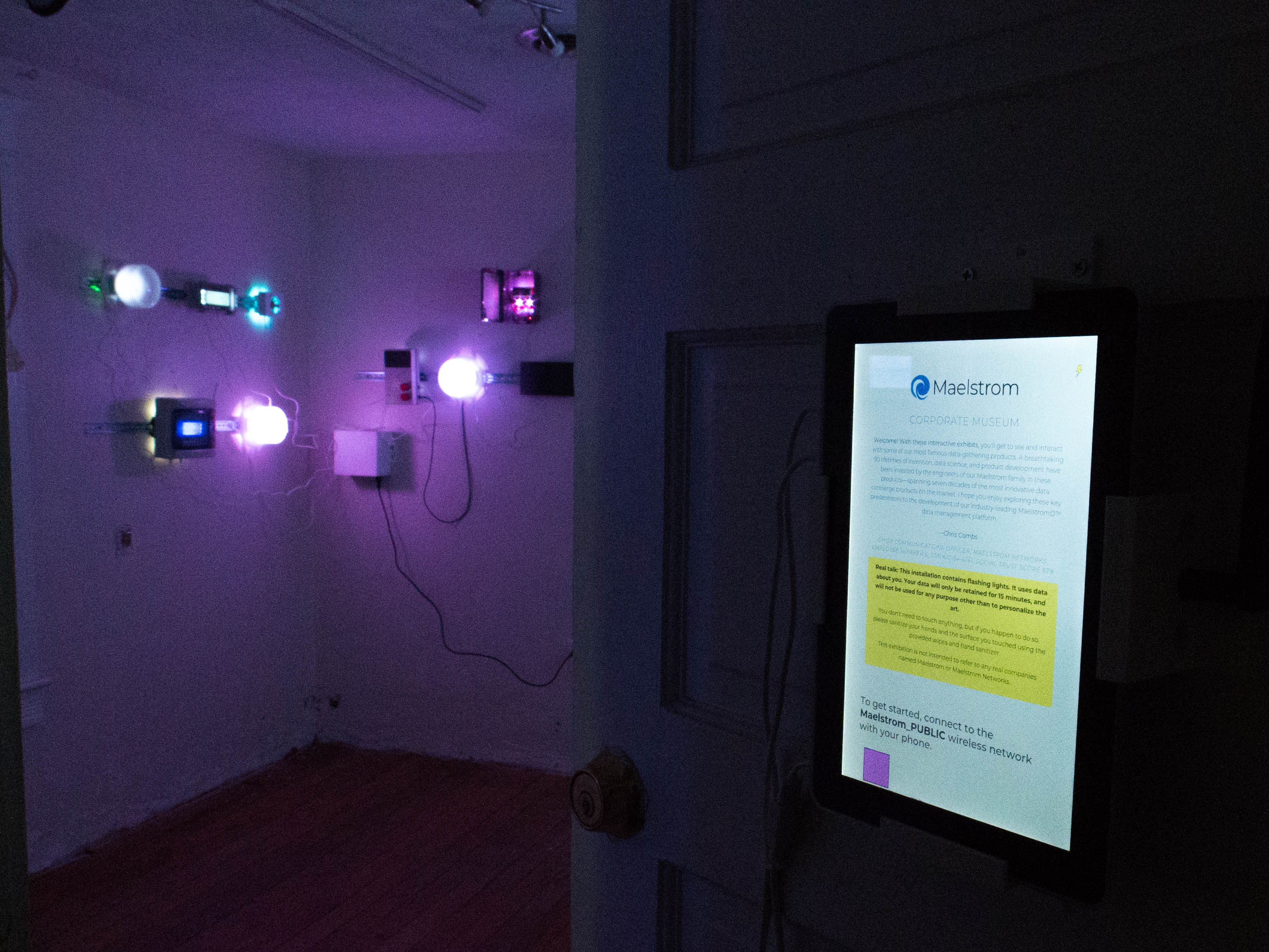
The welcome screen encourages them to use their phone to join a "Maelstrom_PUBLIC" wireless network, provided by one of the machines, which prompts them to "sign in to the network" by answering just a few questions, starting with their first name. If they do, it designates them with a color, which begins to propagate on the lights throughout the exhibition. The sign-in screen asks another question (what's your favorite color, say) and then another. If they answer these questions, the machines begin to discuss the datapoints entered. ("I heard that their first name is Chris.") The "written voice" of the machines is that of an amateur sleuth on social media, attempting to form connections between disparate facts.

If they answer all of the questions, a "dossier" of the data they provided--and the data sensed from their device, such as their operating system, device manufacturer, etc.--is shown to them on their phone.
Nearby is the "End-User License Agreement" console, which informs them that by appearing in the installation, they consented to the use of their image and data by the (fictional) Maelstron Networks, and as they read this, a camera attempts to recognizes their face and display it in a list of those who recently consented ("Thank you!").
As they walk through the ~35 machines with screens and speakers, set in several different vintages, the colors, displays, and speakers reflect the information gathered about them. Some of these machines are endearing in appearance: old-timey radios, clean white machines, a chunky Game-Boy-esque device.
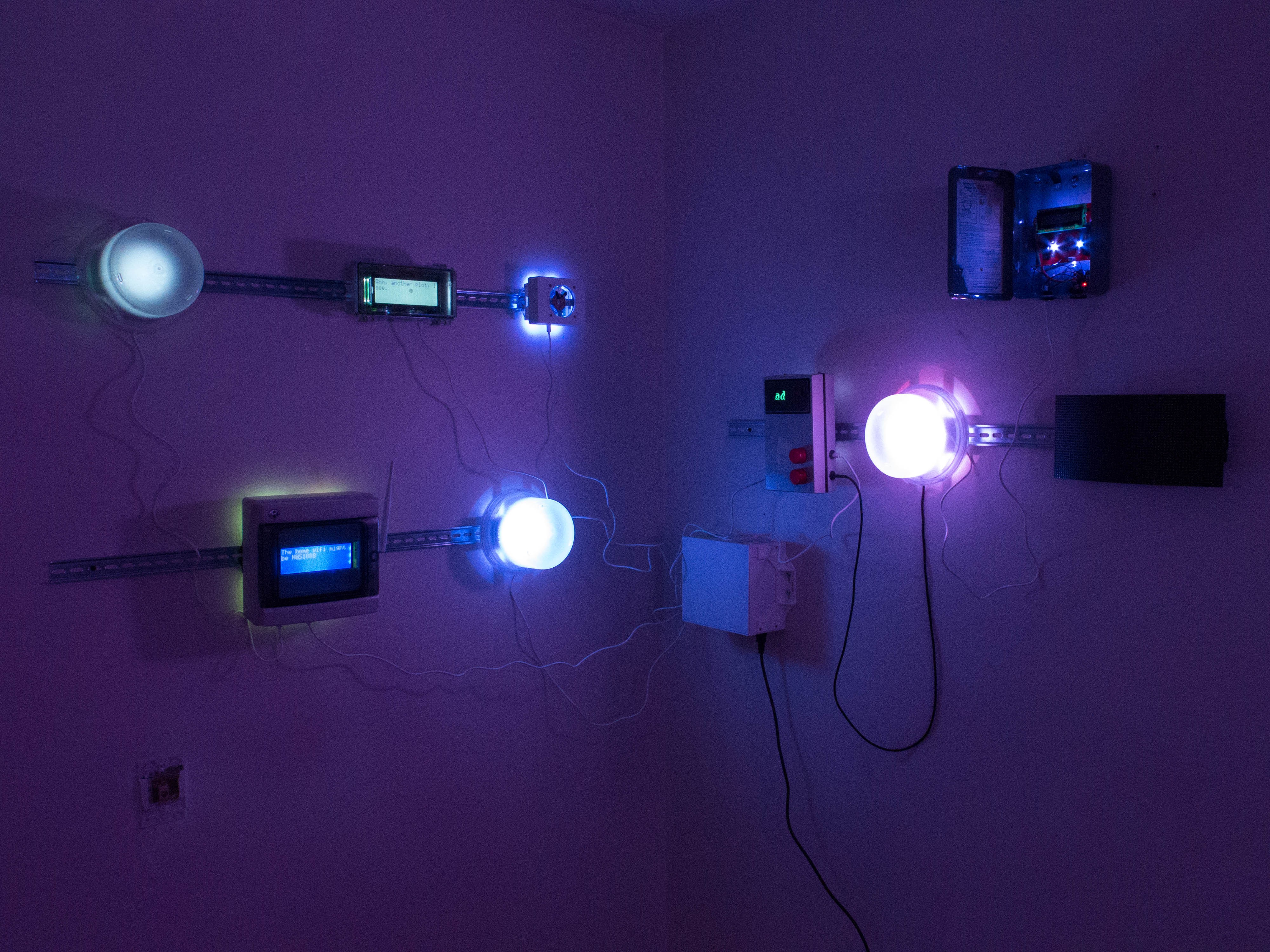
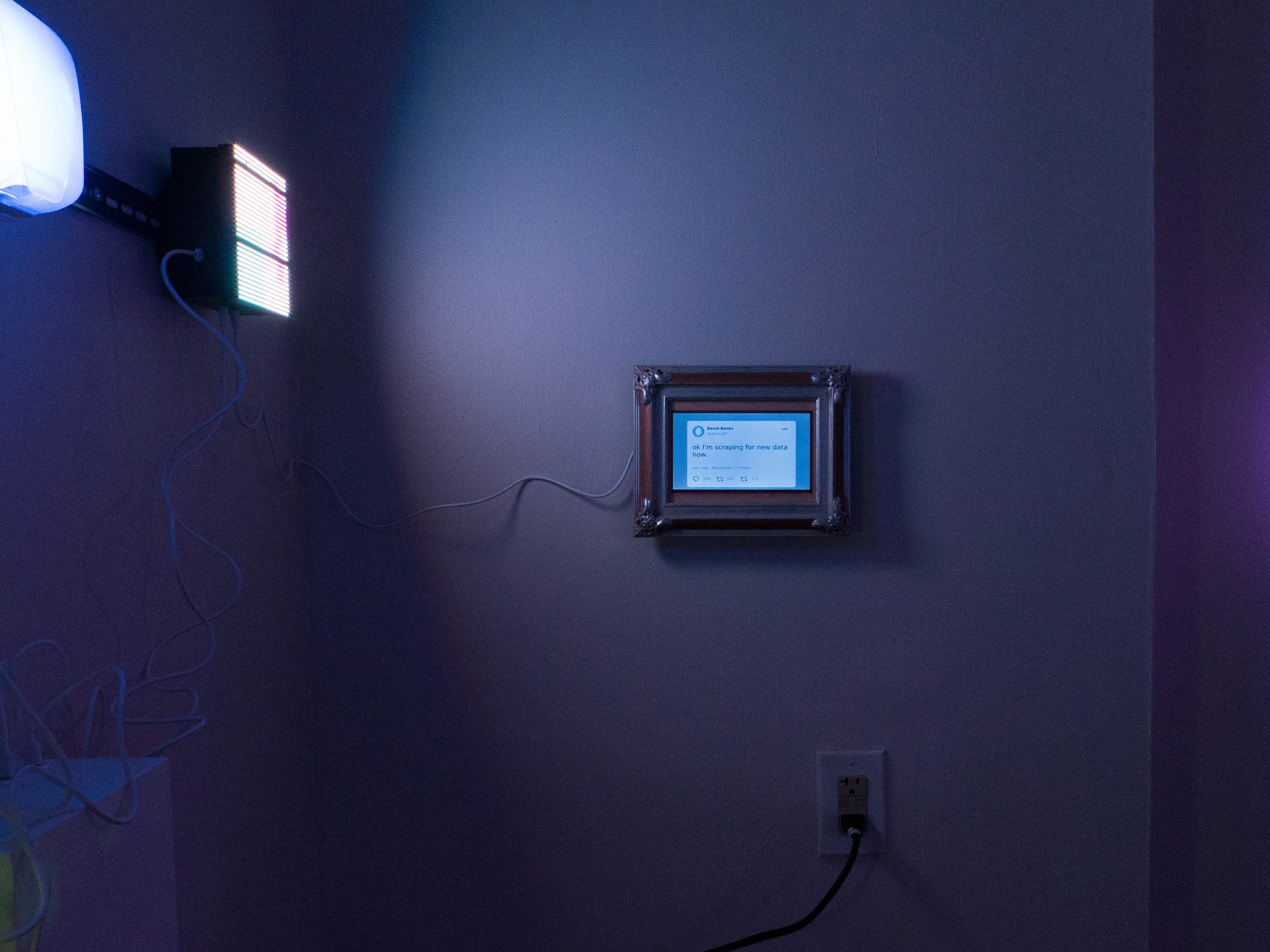
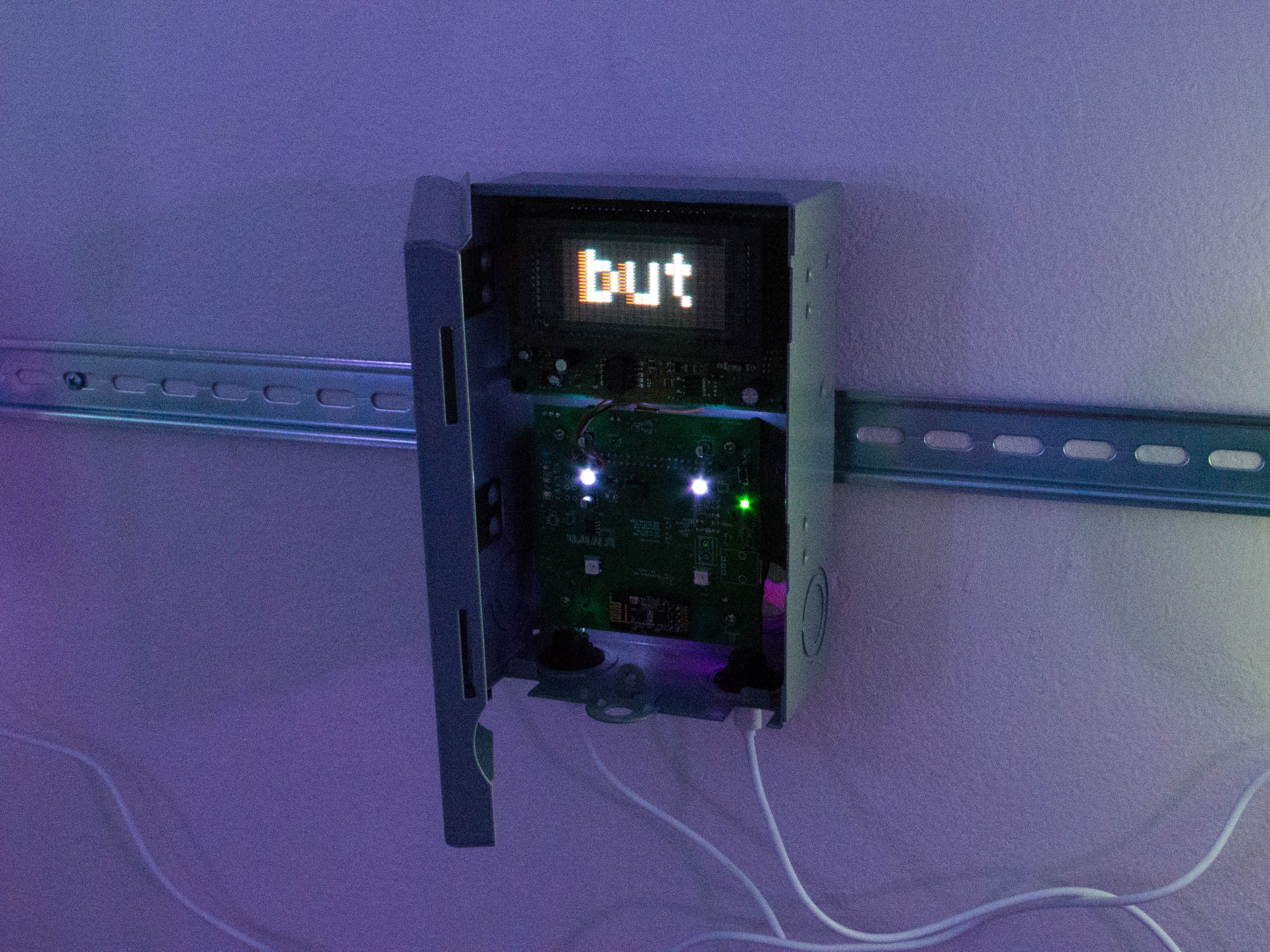
Another data entry station lets them scan a magnetic stripe card or ID card (with a "2D barcode" on the back) to "autocomplete their profile" in the "Maelstrom-D data management platform," the signature product of the fictional Maelstrom Networks, Inc.
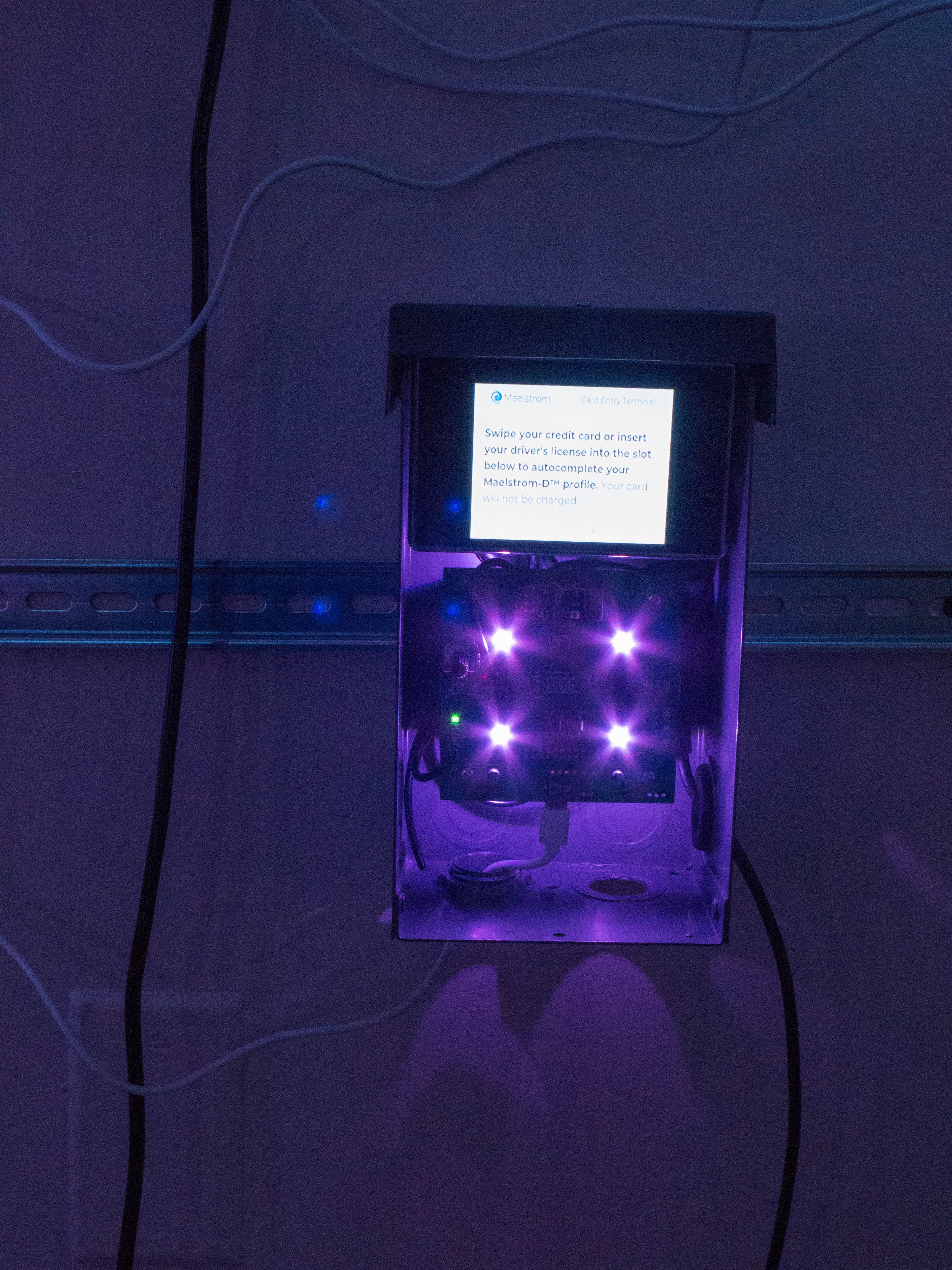
It is my hope as an artist that visitors will be more thoughtful about how their data spreads after experiencing "Maelstrom," and advocate for a better, brighter future for data management in the US.

 Chris Combs
Chris Combs
Discussions
Become a Hackaday.io Member
Create an account to leave a comment. Already have an account? Log In.